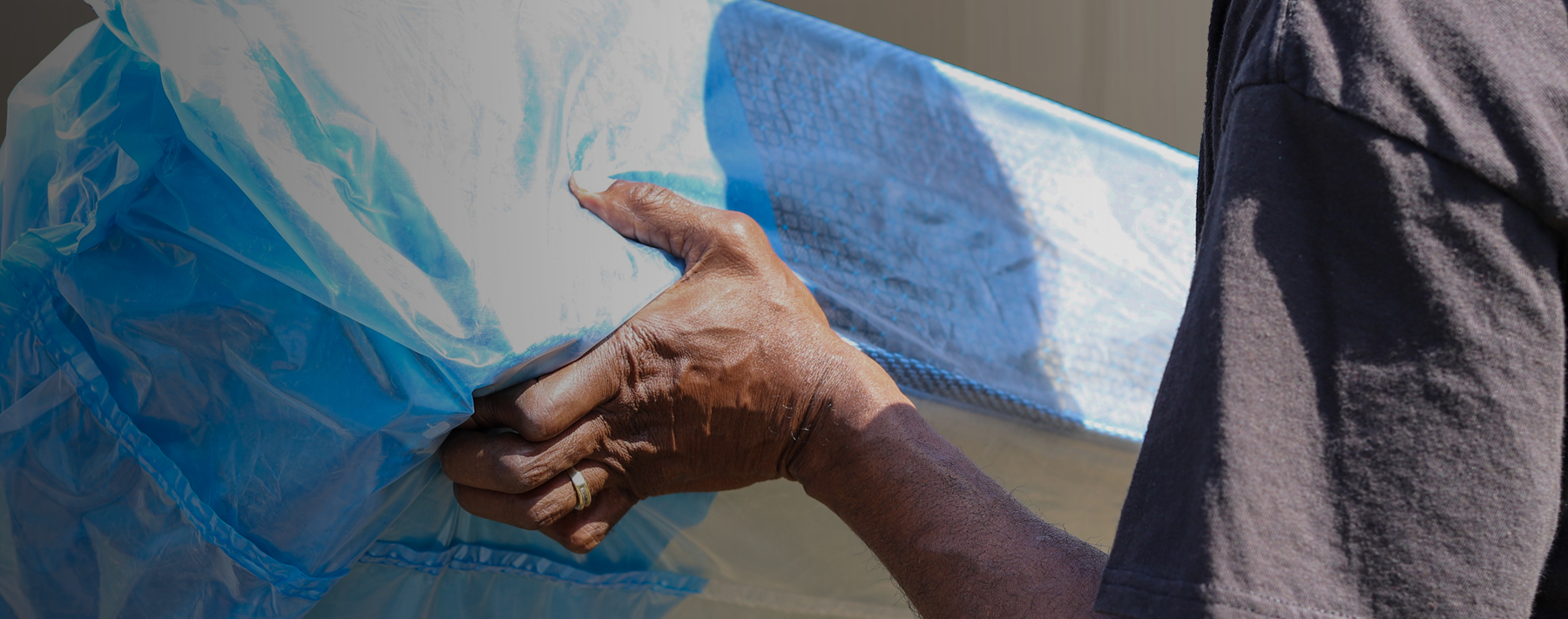Again and again, the national conversation around policing in America gets hijacked by the latest high-profile crisis. From nationwide protests to calls for defunding agencies, law enforcement has often found itself in the eye of a political and cultural storm. The good news is that public trust in law enforcement is ticking up.
I discussed this topic in my 2024 article, “Recent Polls on Policing Show Positive Trends for U.S. Law Enforcement.” Not unexpectedly, current polling shows a modest but consistent rebound in confidence toward police. And it’s not just among select groups — improvement is visible across racial lines, including among Black Americans, as well as other demographics.
Before everyone in law enforcement takes a victory lap, though, it’s important to note there’s still plenty of room for improvement. In fact, the data show misconceptions and media-fueled distortions about policing remain deeply embedded in the public psyche.
Let’s unpack some of the numbers, examine what’s changed since 2020, and explore how law enforcement agencies can continue to improve relationships and increase trust with the communities they serve.
Gallup Polling on Police-Community Relations
In May 2025, Gallup published the results of a survey showing encouraging signs for local police departments across the U.S. Drawing on data collected throughout 2024, the report found 74% of Americans have confidence in their local police — up from 71% in 2023.
The poll, conducted by the Gallup Center on Black Voices, shows the shift in attitude is even more striking among Black Americans. In 2021, just 59% of Black survey respondents expressed confidence in local law enforcement. By 2024, that number had climbed to 64%. Meanwhile, white respondents actually showed a slight decline in confidence over the same period, from 80% in 2021 to 77% in 2025. The long-term, overall trend, though, is positive.
Gallup also asked whether survey participants were satisfied with police-community relations. After dipping to 74% in 2023, overall satisfaction rose again to 76% in 2024. And here’s a stat worth highlighting: When asked whether they believed police would treat them with courtesy and respect, 75% of Black respondents said yes. That number is up from 69% in 2021. While not exactly a giant leap, it’s definitely a positive sign. (The aggregate stat for all U.S. adults is 87%.)
As Gallup’s Megan Brenan puts it, “While confidence and satisfaction levels among Black adults remain below those of white Americans, they have improved across multiple measures.” In other words, things aren’t perfect, but at least they’re moving in the right direction.
Pew Polling on Attitudes about the Police
The Pew Research Center conducted its own query into race, policing and politics in May 2025 — and it’s no accident this coincided with the five-year anniversary of George Floyd’s 2020 death in Minneapolis, Minnesota.
When it comes to race and policing, according to Pew, 54% of Americans think things are “about the same” as they were in 2020. The Pew data also highlights a partisan divide:
- 28% of Democrats and 39% of Republicans believe relations between police and the Black community have worsened since Floyd’s death.
- 59% of Democrats and 49% of Republicans think relations have stayed the same.
These views are largely consistent across racial and ethnic groups, which suggests the real divide isn’t about race, but perception.
Trust doesn’t come from one well-drafted policy, it comes from thousands of small, respectful interactions.
Police Reform Since 2020
First, has anything actually changed since 2020? The short answer is yes. A lot.
1. Federal-Level Reforms
In May 2022 President Joe Biden signed Executive Order 14074, with the goal of promoting more effective and accountable policing. Key reforms included:
- A national police accountability database.
- A ban on chokeholds and carotid restraints (unless deadly force is justified).
- Mandatory body-worn cameras (BWCs) for federal law enforcement.
- An emphasis on de-escalation tactics.
Around the same time, the Department of Justice also launched several “pattern-or-practice” investigations into departments accused of violating civil rights and increased the use of consent decrees to enforce changes. Many of these were dismissed in recent months by the Trump administration as being “overly broad.”
2. State-Level Legislative Reforms
Though Congress has remained deadlocked on passing substantial policing reforms, several states have passed state-level reform laws. Here are a few examples:
- Arizona: Enacted HB 2650, requiring independent investigations for use-of-force incidents involving serious injury or death.
- California: Passed AB 392, which restricts law enforcement’s use of deadly force to situations where it is deemed “necessary” (as determined from the perspective of a reasonable officer on the scene) rather than just “reasonable.”
- Colorado: Passed SB 217, which bans chokeholds, removes qualified immunity and mandates body-worn cameras.
- Illinois: Passed the SAFE-T Act, which eliminates cash bail and mandated BWCs for all officers by 2025.
- Maryland: Overrode a governor’s veto to repeal the Law Enforcement Officers’ Bill of Rights, banned no-knock warrants, and required body-worn cameras by 2025.
- Minnesota: Passed legislation banning chokeholds, prohibiting “warrior-style” training, and mandating de-escalation and mental health training.
- New York: Repealed 50-a, unsealing police disciplinary records.
- Virginia: Enacted a reform package banning chokeholds and most no-knock warrants.
Over 40 states now have officer decertification laws to prevent “wandering officers” — those terminated for cause in one jurisdiction — from resurfacing in another. In addition, many states also now enforce a “duty to intervene,” compelling officers to stop and report excessive force by peers.
More police reform tracking can be found here.
3. Criminal Justice System Reforms
Beyond policing, the entire criminal justice system has also seen plenty of change:
- Bail reform in states like New Jersey, New York and Illinois has reduced pretrial detention.
- Sentencing changes have expanded parole, reduced minimums and decriminalized marijuana-related charges.
- Juvenile justice has been reformed in many areas to focus more on rehabilitation than on incarceration.
- Body-worn cameras are now practically universal, thanks in part to federal funding.
- Data transparency efforts have grown, many featuring public dashboards showing use-of-force and stop data.
While you wouldn’t necessarily know this based on public perception, quantifiable changes in both policing and criminal justice have happened since 2020. Whether these changes will have a positive impact on public safety in the long run … well, that’s a different question altogether. But reforms have definitely occurred.
4. Local Law Enforcement Reforms
At the local level, changes have been both tangible and tactical:
- Many jurisdictions have implemented or bolstered the authority of civilian oversight boards, giving them authority to investigate and discipline law enforcement officers.
- Others have overhauled policy and training programs to focus on de-escalation, bias training and mental health response.
- Use of force guidelines have been revised by many departments.
Some agencies are also piloting “co-responder” models — pairing officers with social workers or mental health clinicians for certain calls. The thinking here is less “defund the police” and more “rethink the response.” Early reports on the results of such programs show promise in decreasing the use of force and diverting individuals from arrest, but require much more rigorous study to determine long-term outcomes and impact on costs.
Proactive Public Relations
Public trust in law enforcement is improving — slowly, steadily and across demographics. That’s the good news. But perception still lags behind progress. While meaningful reforms have happened at every level of government and in agencies across the country — reshaping policies, strengthening accountability and re-centering on community safety — many Americans remain unaware of or unconvinced by these efforts.
Based on the perceptions reflected in the polls mentioned above, there plenty of improvements agencies and officers can make to keep moving the needle:
- Engage transparently: Public dashboards, community meetings and candid conversations go a long way in humanizing officers and what they do.
- Prioritize procedural consistency: When people feel they’re being treated fairly — even when outcomes don’t go their way — they’re more likely to view law enforcement through a positive lens.
- Train with purpose: Bias awareness, crisis response and cultural sensitivity should be core competencies, not check-the-box requirements.
- Build personal relationships: Trust doesn’t come from one well-drafted policy, it comes from thousands of small, respectful interactions in grocery stores, schools, neighborhoods and traffic stops.
- Foster a culture of intervention: This might be the most important change an agency can make. Whether or not your jurisdiction has passed legislation to codify a legal duty to intervene, it’s also critical for law enforcement leaders to grant permission to intervene. This is not just about following the law or improving public perceptions. It’s about taking care of each other, being willing to step in when the warning signs are obvious. It’s about prolonging careers and protecting lives.
In short, officers and agencies don’t need to wait for Congress and the courts to effect change. The power to continue rebuilding trust already exists — in every roll call, on every shift, during every community contact.
Don’t Ignore Younger Generations
As your department does what it can to promote its efforts to ensure ethical policing in your community, it’s critical to find ways to reach young people, who are much less likely to trust law enforcement.
Unfortunately, those from the millennial generation and younger often have wild misperceptions about the realities of policing and criminal justice. In a poll published in 2024, the Skeptic Research Center asked, “how does Americans’ accuracy about policing vary by generation, and how does being inaccurate about policing relate to trust of police?”
A key question included, “How many unarmed Black men were killed by police in 2021?” Almost 40% of Gen Xers and 34% of baby boomers got the “right” answer, according to the report. Startlingly, over 40% of Gen Zers and nearly 30% of millennials believed the number was at least 1,000. In fact, a whopping 14% of Gen Z respondents believed the number of unarmed Black men killed by police the previous year was 10,000 or greater.
The actual number (according to the Washington Post) was 11.
The survey found those who vastly overestimated the number of lethal force encounters were much less likely to trust law enforcement to “act in the best interest of citizens.” When perceptions are this far removed from reality, it’s hard get people interested in the changes your agency is making.
Improvements Continue
For some, law enforcement still exists primarily in black-and-white reruns, stuck in a version of America where accountability was virtually nonexistent and justice only applied to certain segments of the population. That disconnect has real consequences: It undermines morale, erodes public confidence and fuels polarization around criminal justice issues that should be above partisanship.
In reality, law enforcement in the United States has never been perfect. It never will be. No profession that operates at the intersection of power, discretion and public service can be. Yet that doesn’t mean we should ignore the progress that’s been made or stop striving to be better.
What we do now will determine whether the current upward trend in trust is a blip or a breakthrough.
Progress is happening. It’s measurable. It’s encouraging. And it’s not finished.



